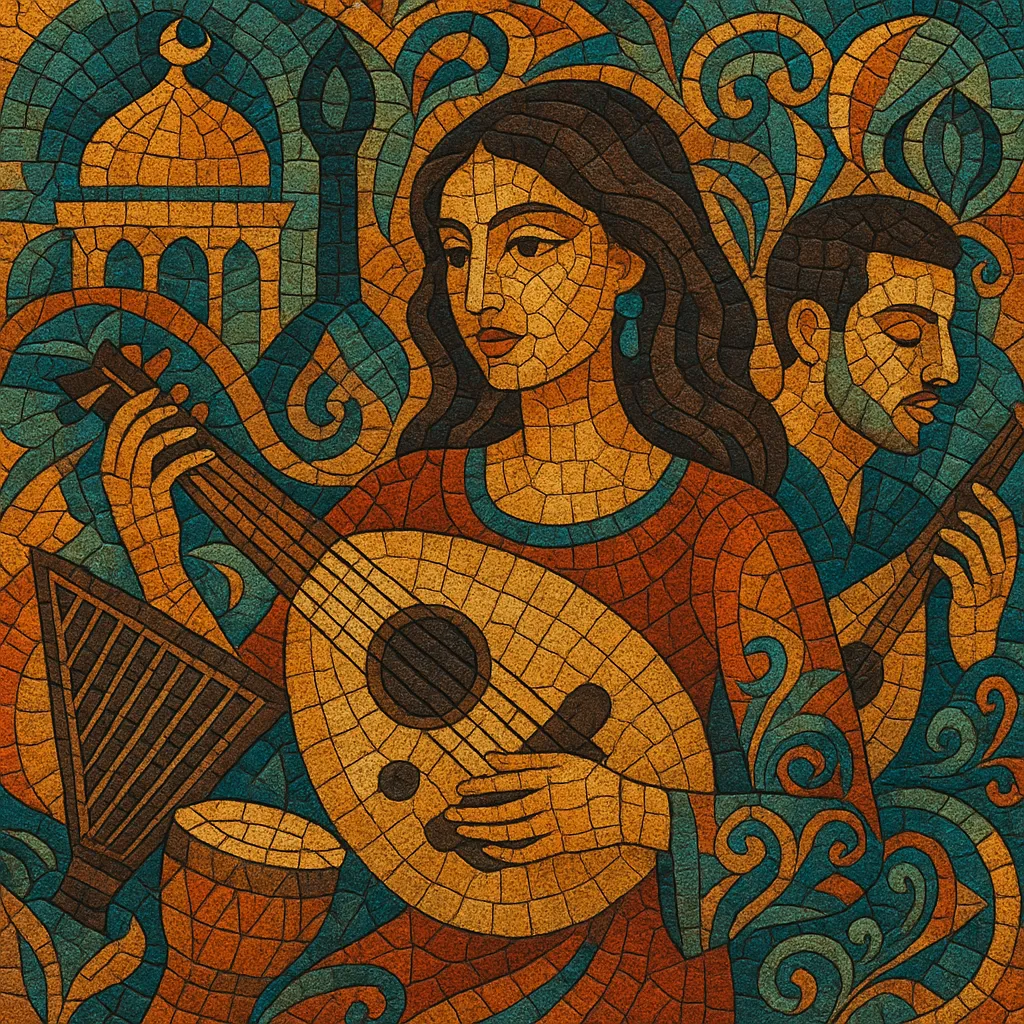Arabic pop is the mainstream, commercial song style of the Arabic‑speaking world, blending Western pop structures with Arabic melodic modes (maqām) and regional rhythmic cycles (iqa‘āt).
Arrangements typically pair traditional instruments like the oud, qanun, nay, strings, and darbuka with electric guitar/bass, keyboards, drum machines, and modern synthesizers. Vocals are highly ornamented (melisma, trills, turns) and delivered in widely understood dialects such as Egyptian and Levantine, as well as Khaliji and Maghrebi Arabic.
Songs favor verse–pre‑chorus–chorus forms with catchy hooks, glossy production, and video‑forward presentation. Lyrically, themes of romance, longing, celebration, and everyday life dominate, spanning intimate ballads to up‑tempo dance anthems.
Arabic pop draws its foundations from mid‑20th‑century Egyptian and Levantine song traditions. Egyptian cinema and radio—centered in Cairo—standardized star vocalists and large orchestras, while composers like Mohamed Abdel Wahab blended Arabic maqām with Western orchestration. Iconic singers such as Abdel Halim Hafez and Fairuz popularized emotive, hook‑forward songs that foreshadowed modern pop aesthetics.
As tape and cassette markets expanded, producers in Egypt and Lebanon introduced disco backbeats, electric instruments, and early synths to Arabic song forms. Studios in Beirut and Cairo professionalized the pop session ecosystem—string sections, studio bands, and arrangers—while maintaining modal melodies and iqa‘āt such as Maqsum, Sa‘idi, and Malfuf.
Pan‑Arab satellite channels (e.g., Rotana, ART, Mazzika, Melody) created a video‑driven star system and unified regional taste. Artists like Amr Diab, Ragheb Alama, and Samira Said fused Eurodance, Mediterranean pop, and house textures with Arabic vocal phrasing, making the modern Arabic pop sound a pan‑regional benchmark. Music videos, branding, and high‑gloss production became as important as the audio.
With digital workstations and autotune, Arabic pop incorporated R&B, hip‑hop, and EDM—tight side‑chained synths, 4/4 kicks, and layered claps—without abandoning maqām‑based melodies. Diaspora hubs (Paris, London, Dubai) and regional capitals (Cairo, Beirut, Gulf cities) exchanged talent and production techniques. Streaming and YouTube reshaped consumption, while crossover collaborations increased.
Contemporary Arabic pop ranges from romantic ballads to club‑ready tracks that interweave trap, reggaeton, and Afro‑influenced rhythms. Street‑level scenes like mahraganat (electro‑shaabi) have influenced mainstream palettes, and artists tailor releases for short‑form video and platform algorithms. Despite market disruptions, the genre remains the dominant commercial sound of the Arab world, continually absorbing global pop trends while retaining Arabic modal and rhythmic identities.


